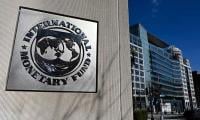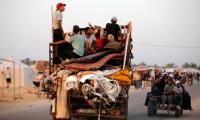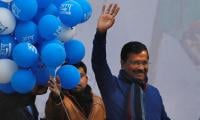Politics has no shame. Why should the PTI be an exception only because it claims to be as pious as a Sheikh Sahab in Ghalib’s verse? There is no point in reminding the PTI that a metro-bus project used to be a sinful idea just a few months ago; its wizards had offered to build Islamabad’s Metro in seven billion rupees only, while its government intends to spend Rs48 billion on a similar project in Peshawar; PTI leaders used to swear by holy names that a Metro in Peshawar could be constructed only over their mass graves.
Peshawar is getting clogged and requires a decent public transport system. Bus Rapid Transit (BRT) is a relatively cost effective model, tested and tried in dozens of world cities, including three in a province ruled by the hated dynasty of the Sharif family.
Road infrastructure consumes a good part of our development budget, both at the national and provincial levels. Much of the road infrastructure is built to cater to the needs of motorists, completely ignoring pedestrians, cyclists and users of public transport. Rapid Bus Transit (RBT), called Metro in Punjab, has reversed this trend to some extent, providing relief to millions of urban commuters.
Unfortunately, the Punjab government has built metro-bus projects as monuments, overspending on its air-conditioned terminals and providing a heavy subsidy to its users at the cost of a large majority of public transport users in the rest of the province who remain deprived of the basic facilities. I hope that the PTI government has had a chance to correct some of the mistakes made in Punjab’s RBT.
Unfortunately, it is not just metro-buses that Khyber Pakhtunkhwa is trying to emulate in a desperate bid to woo the KP voter, known for never electing a government twice. It is the whole model of development adopted by the Shahbaz Sharif government that is being replicated in KP. The PML-N has excelled in patronage-based governance, spending excessively on favourite constituencies and districts, ignoring the less privileged areas. This is exactly what the PTI government has done in KP.
To be fair, this model was not invented by the PML-N government. This is the order of things since Independence. Some geographical areas have better representation in bureaucracy and political leadership. These areas receive a huge chunk of public goods at the cost of less developed areas.
During the last financial year, the Punjab government allocated Rs134 billion for 445 schemes of Lahore out of a total district-based allocation of Rs229 billion. The second highest allocation for development schemes went to southern Punjab’s Multan which got only a three percent share with Rs8.2 billion for such projects.
The Omar Asghar Khan Foundation (OAKF), a leading development sector organisation working in KP, has carried out an excellent analysis of the province’s current budget which reveals the real policies of the PTI government.
Nowshera, the home district of Chief Minister Pervez Khattak, has received Rs5.47 billion (2.63 percent), which is only slightly less than Rs5.9 billion (2.63 percent) – the development budget received by the six districts of the Hazara division. Within the Hazara divison, Haripur District, with a population of one million, has received 14 times more budget than the poor Battagram district with a population of half a million.
The six least developed districts, mostly located in the south (Bannu, Hangu, Karak, Kohat, Lakki Marwat and Tank) with a population of 4.7 million have received a mere Rs3.67 billion. Three persons in these districts are barely equal to a single person in the district of the chief minister.
According to a government assessment of multidimensional poverty in Pakistan (2016), 60-70 percent of households in Nowshera were poor in 2004. This has reduced to 30-40 percent in 2015. Comparatively, poverty in Tank has remained constant in the meantime, since more than 70 percent of its households are still categorised as poor.
The unfair distribution of resources may a major reason behind this disparity. According to Rashida Dohad of OAKF, “The people of Tank have minimal opportunities to move out of poverty with just Rs0.06 billion allocated for its development in 2017-18, compared to Rs5.47 billion given to Nowshera, only because it is the home district of the Sultan of KP.”
Ironically, provinces receive their allocation from the NFC on the basis of population and poverty but spend it on the basis of patronage. This is exacerbating disparities within the provinces, particularly in Punjab and KP.
The current budget shows that funds for local government have also failed to meet the threshold set by the Khyber Pakhtunkhwa Local Government Act 2013, ie, at least 30 percent of the total ADP. In FY2017-18, the allocation for local government is Rs32.5 billion, ie, 26 percent of total development funds. If the vertical transfer under District ADP is considered, then the funds for local government are reduced to Rs28.0 billion, ie, 22.22 percent of the total.
The provincial government’s inability to meet the minimum level of fiscal decentralisation it set itself may indicate the priority it places on this important governance reform.
Even more surprising is the decision to divert some of the funds for local government towards allocating Rs0.56 billion as public interest funds for the use of the chief minister, and Rs0.28 billion for the finance minister who belongs to the Jamaat-e-Islami, the PTI’s coalition partner in Khyber Pakhtunkhwa.
The PTI’s main slogan has been to focus on human development rather than the brick and mortal development model followed by the PML-N governments. However, a high priority in Khyber Pakhtunkhwa’s budget for FY2017-18 appears to be voter-friendly public spending on infrastructure, ie roads, building, housing, industries, transport and urban development. Combined, they are allocated Rs77.37 billion which accounts for 37.2 percent of the total budget. This funding is nearly double the Rs30.28 billion or 18.81 percent allocated to this sector in FY2016-17.
According to OAKF, “This steep rise likely signals preparations for the 2018 elections. Compared to infrastructure, less priority is given to health. Its allocation has reduced from Rs17.48 billion or 10.86 percent in FY2016-17 to Rs16.47 billion or 7.92 percent this year. This is lower than the average allocation of 8.48 percent over the past five fiscal years.”
How will the KP government treat Fata after integration? The way it treats Bannu or the way it treats Nowshera? Will the KP government not divert resources meant for Fata to its favourite areas? Is that the main reason for KP being so keen on integrating Fata?
These policies bring to question the tall claims made by the PTI regarding its war on corruption. Is this misallocation of resources not a form of robbery meant to get political benefits? Who is responsible for those who remain uneducated or die because their funds have been diverted elsewhere? Does it really matter to a person in Tank how honestly the money stolen from him was spent in Nowshera? Lastly, how should we react when we find Sheikh Sahab stepping out of the tavern, wiping his mouth with his turban, heading towards the pulpit?
The writer is an anthropologist and development professional.
Email: zaighamkhan@yahoo.com
Twitter: @zaighamkhan
The post-election situation will be troublesome and worrisome for Modi
Most favourable concept developed so far revolves around public-private partnerships
There is only one way forward: cut non-development expenditures, including non-combat defence expenditure
The plan aims to ensure financial stability, control inflation, and promote economic prosperity
Currently, a staggering 60 per cent of government revenue is being wasted on interest payments
It seems that Beijing’s goodwill, stronger financial stature, principle of non-interference in domestic affairs and...







